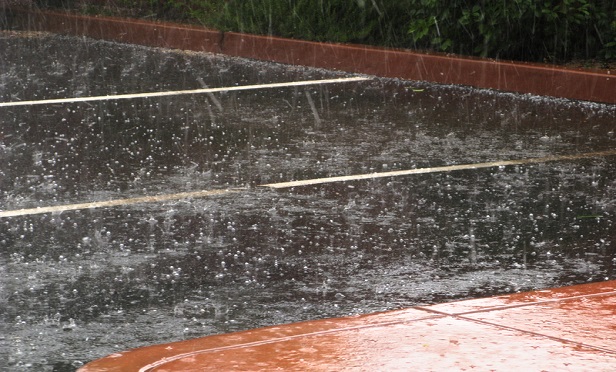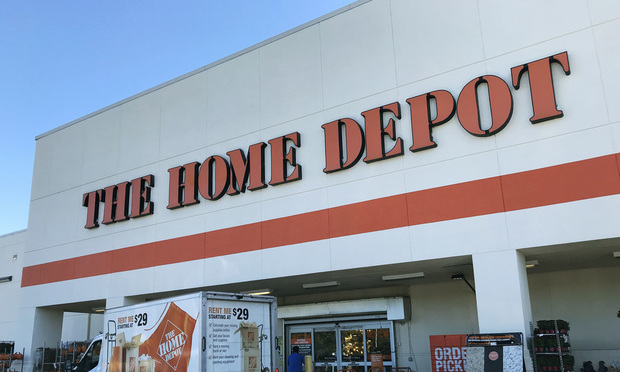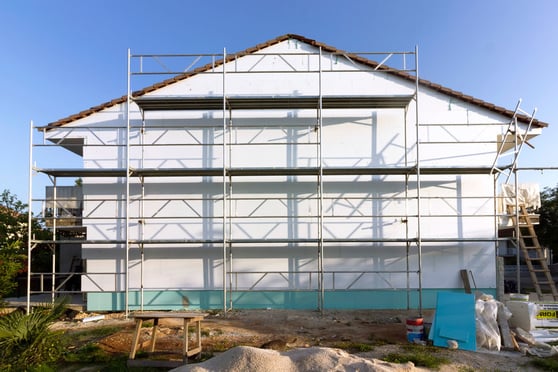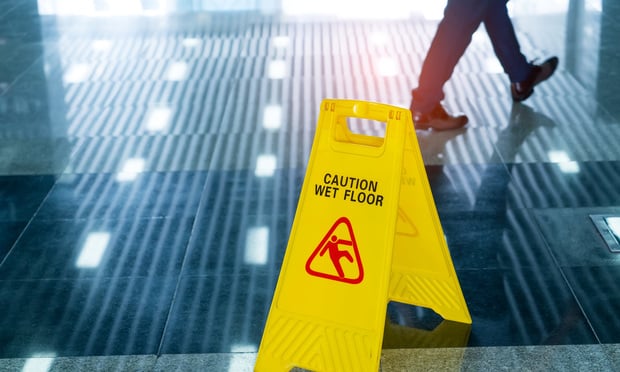 Depending on the policy language, water damage caused by the rain may not be covered. (Photo: iStock)
Depending on the policy language, water damage caused by the rain may not be covered. (Photo: iStock)
Analysis brought to you by the experts at FC&S Online, the recognized authority on insurance coverage interpretation and analysis for the P&C industry. To find out more — or to have YOUR coverage question answered — visit the National Underwriter website, or contact the editors via Twitter: @FCSbulletins.
Question: A policyholder has an ISO HO-3. The carrier has utilized the defined phrase of “property damage” in determining coverage for a homeowners claim made under Section I of the policy. I have reviewed Section I of the policy and cannot locate the defined phrase of “property damage”. The phrase “property damage” only exists under Section II. Section I only contains the word “damage” not “property damage”. Is it accurate or appropriate for the carrier to cite and rely on the definition of the phrase “property damage” regarding a claim made against Section I when the phrase is only located in Section II?
— New Jersey Subscriber
Answer: The term “property damage” in the ISO HO 00 03 05 11 is defined as follows on page 2 of the policy:
“Property damage” means physical injury to, destruction of, or loss of use of tangible property.
Once defined, you are correct in that the term is not used again until Section II. Therefore, the carrier should not be applying that definition to any damage that occurs to property under Section I. When a term is not defined in a policy, courts generally go to a standard desk reference since that is what the average insured would do. Merriam Webster Online defines damage as: “loss or harm resulting from injury to person, property, or reputation.”
Related: Here's why some fire damage claims go up in smoke
Damage produced by forced SWAT team entry
Question: SWAT team legally via search warrant forced entry to the home to detain tenants. Is damage by SWAT team to doors/windows excluded under COL — Special 10 30 10 12, Exclusion 1.c. Governmental Action: Seizure or destruction of property by order of governmental authority. or 3.b. Actions or decisions… of any… governmental body.
Related: 3 challenges with property claims
Regarding the first exclusion mentioned (Excl B.1.c), some saw the exclusion not to apply as the damage to the building was not ordered by the governmental authority. Thus taking the exclusion more literally “destruction of property by order of governmental authority”; application of the exclusion would be if the government ordered the destruction of the property for whatever reason (say evidence in a hazmat situation).
However, the 2nd exclusion listed (Excl 3.b) seems more appropriate – We do not pay for loss or damage caused by or resulting from .. “Acts… of any governmental body”.
— Virginia Subscriber
Answer: According to the exclusion for Governmental Action, the only loss that would be covered is ensuing fire. Otherwise the exclusion would preclude coverage for the damaged windows/doors.
Even though the team was acting legally, the SWAT team is a government authority and as such their actions in damaging the property are excluded.
You will no doubt find the below referenced discussion article on this exclusion quite helpful. The case in point closely related to your example is described as follows:
For example, in Alton v. Manufacturers and Merchants Mutual Insurance Co., 624 N.E.2d 545 (Mass. 1993), police executed various warrants to search a building for cocaine, drug paraphernalia, records of drug transactions, and money. In carrying out the search, the building was damaged. The insured submitted the loss to his insurer, which denied the claim. The court upheld the denial, stating that the damage was caused by the police in executing the search warrant, and the search necessarily entailed a certain amount of destruction.
As an aside, depending on the facts of the situation, the insured may wish to contact the authorities and ask if they will cover the damages.
Related: Here's why fighting crime causes uninsured property damage
Is dust considered property damage?
Question: Under a commercial general liability policy, we have the following situation. The insured was hired to remove old flooring and replace it with new flooring. The removal of the old flooring caused excessive dust in the claimant's home. Is dust considered property damage?
— Connecticut Subscriber
Answer: Dust itself is not property damage, but if it caused physical injury to tangible property or if it caused a loss of use of tangible property, then PD would occur.
Related: Water, water everywhere: Flood claim questions answered
Scratched glass and exclusions
Question: Our policyholder is a painter. He was hired by a builder to paint the interior and exterior of a house being constructed. The painter primed all the windows (which were in place in the house) and then scratched the interior glass while sanding the window sashes and non-removable muntins. All the windows have to be replaced. We contend Exclusion J.5 of the CGL is applicable. The agent contends that the glass is a separate part and therefore the exclusion is not applicable. Is there coverage?
— Kentucky Subscriber
Answer: We agree with you on this. It is an interesting argument that the agent is making about the glass, but since the glass is already in the window, it is the window, and sashes and muntins are also the window. These items may be separate parts on their own, but they are now incorporated into one piece of real property and that is the window. Exclusion j5 is applicable since this part of real property has been damaged while the insured was working on it and the damage arose out of that work.
amage caused by rain
Question: An insured with a Cause of Loss — Special Form, CP 10 30 04 02, sustained damage to the insured building caused by heavy rain that caused rain water to flow from the roof into the interior walls resulting in damage to the walls and causing mold to form inside the walls. There was no other damage to the roof or walls of the building. Will this water damage caused by the rain be insured?
— New York Subscriber
Answer: The CP 10 30 contains a limitation stating that loss or damage to the interior of any building or structure caused by or resulting from rain is not covered unless the building first sustains damage by a covered cause of loss to the roof or walls through which the rain enters. Since in the situation you describe there was no damage to the roof or walls, the water damage caused by the rain would not be covered.
Related: 5 tips for claims pros inventorying water-damaged sites
When dogs attack… a rental property
Question: We insure a dwelling under an HO 00 03 10 00 ISO form with a Limited Fungi, Wet or Dry Rot & “Bacteria” Coverage endorsement attached. The insured had a tenant who owned a dog and lived in part of the owner-occupied dwelling. The facts of the case suggest that the tenant owned this dog, not the “insured(s)” and that the dog caused damage to various carpeted and hardwood floors within the rented portion(s) of the dwelling. When the tenant moved out, the insured(s) discovered the damage done by the tenant's animal and reported a claim for cleanup and repair/replacement of damaged flooring surfaces.
My coverage question is two-fold. First, as the “animal” was not “owned” or “kept” by the “insured”, it appears that the open peril exclusion under A-Dwelling would not apply, thereby covering the damage caused by the tenant's animal. Secondly, as the damage done by the animal relates to bodily fluids, the “bacteria” enhancement coverage has been brought into question. The insureds contend that they must sanitize (clean up – remediate) the animal's mishaps before they can rent the property to another occupant. As the proximate cause of loss is likely covered (ambiguous at best with respect to an animal not “owned” or “kept” by an “insured”) wouldn't the Limited Fungi, Wet or Dry Rot & “Bacteria” coverage also be covered as an ensuing loss from an otherwise covered cause of loss?
— Rhode Island Subscriber
Answer: Indeed, since the dog did not belong to nor was kept by the insured, the animal exclusion doesn't apply. However, the wear and tear, marring, deterioration exclusion may apply. If the damage occurred over a period of time, you have wear and tear, however caused, that is excluded. The dog didn't tear up the house all at once.
As far as the fungi, wet/dry rot, bacteria endorsement, that applies only if “all reasonable means were used to save and preserve the property from further damage at and after the time the Peril Insured Against occurred.” Key here is the term “at” — the insured wasn't able to try to preserve or save the property at the time of loss since it occurred over time and was not a specific instance, and the endorsement only provides coverage when that happens. The endorsement is designed for flood situations, and not dogs that aren't housebroken or are just plain rude.
Related: Garbage mistakes spur peculiar property damage claims
Damage caused by riding lawnmower
Question: The insured is a lawnmower repair company. The insured went to a customer's home to pick up his riding lawnmower. The insured back his truck/trailer up to load the mower. The insured got on the riding lawnmower and put it in drive and the mower went in reverse through the garage door damaging it. Does this fall under exclusion g. (Aircraft, Auto or Watercraft) under the CGL form regarding loading and unloading? Also is the mower considered a mechanical device? Lastly, would it fall under subsection a. of the definition of mobile equipment?
— Iowa Subscriber
Answer: Exclusion g is for autos and a riding lawnmower is not an auto. By definition, the lawnmower is mobile equipment. So, in this instance, if the insured is liable for the damage to the door, there is no exclusion to prevent coverage. Any damage to the mower itself is not covered due to the care, custody, or control exclusion.
Property damage liability coverage dispute
Question: Our insured is in the tree service and stump grinding business. After completing a stump grinding job, the insured was loading the grinder onto his owned trailer that was attached to his business truck The grinder was half-way on the trailer and part-way out in the street when a vehicle came along and struck the grinder. The damage amounted to $2,000 to the vehicle.
The insured has a general liability policy and a business auto policy. If the insured is held liable for the property damage claim, would this be covered by the business auto policy or the general liability policy?
— Arkansas Subscriber
Answer: Based on the circumstances of the loss, this would be covered by the business auto policy. The insured was in the process of loading the grinder onto his owned vehicle, and the CGL form excludes bodily injury and property damage arising out of the use of an owned auto; use includes loading and unloading. Conversely, the business auto policy does apply to a claim for bodily injury and property damage caused by an accident and resulting from the ownership or use of a covered auto. The claimant may have hit the grinder, but the property damage was caused by an accident and resulted from the use of a covered auto.
See also:
Want to continue reading?
Become a Free PropertyCasualty360 Digital Reader
Your access to unlimited PropertyCasualty360 content isn’t changing.
Once you are an ALM digital member, you’ll receive:
- Breaking insurance news and analysis, on-site and via our newsletters and custom alerts
- Weekly Insurance Speak podcast featuring exclusive interviews with industry leaders
- Educational webcasts, white papers, and ebooks from industry thought leaders
- Critical converage of the employee benefits and financial advisory markets on our other ALM sites, BenefitsPRO and ThinkAdvisor
Already have an account? Sign In Now
© 2025 ALM Global, LLC, All Rights Reserved. Request academic re-use from www.copyright.com. All other uses, submit a request to [email protected]. For more information visit Asset & Logo Licensing.








